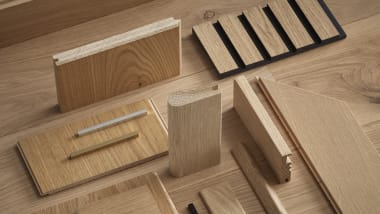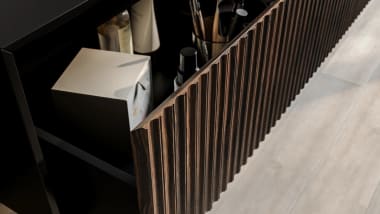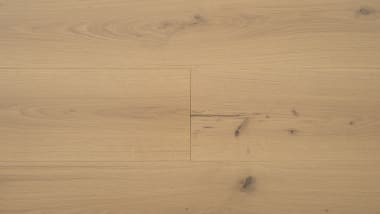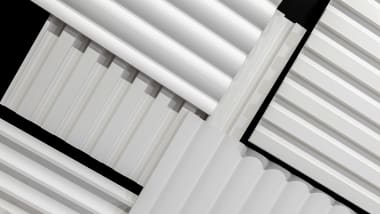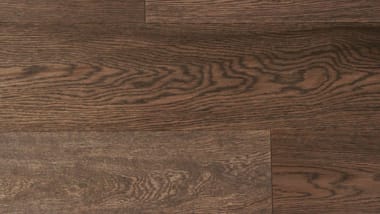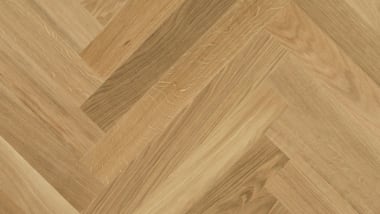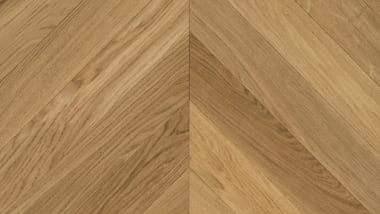Flooring Slip Ratings in Australia: Timber Compliance & Safety Guide
6 Jul 2025
Safety matters as much as style when choosing flooring. Flooring plays a crucial role in interior design, functionality, and safety. One of the most important considerations when selecting flooring - particularly for commercial, public, and wet areas - is slip resistance. While much discussion focuses on tile and stone, slip ratings are just as crucial for timber floors, especially in residential, hospitality, and aged care environments.
In Australia, flooring slip ratings are used to assess how safe a surface is under various conditions, helping to prevent accidents and ensure compliance with safety standards. This article explores what slip ratings are, the different types used in Australia, and when you should request slip rating information for your project.
What is a Flooring Slip Rating and Why is it Important?
Slip ratings provide a standardised measure of how resistant a floor surface is to slipping, particularly under wet or oily conditions. These ratings are crucial for ensuring safety in various environments, including homes, workplaces, public spaces, and commercial buildings.
Flooring that lacks adequate slip resistance can lead to falls and injuries, which can be particularly dangerous in high-traffic areas, aged care facilities, hospitality venues, and industrial settings.
In Australia, slip ratings are a key component of building regulations and workplace safety guidelines. They are especially critical for compliance with the National Construction Code (NCC) and Australian Standards AS 4586, the national benchmark for pedestrian surface slip resistance, which outlines the testing methods and requirements for different environments. Inappropriate flooring can lead to significant safety hazards, particularly for vulnerable populations, making this a critical safety and compliance issue to stay on top of and get right.
Types of Slip Ratings Used in Australia
There are three primary types of slip ratings used in Australia, each measured using different testing methods:
1. Oil-Wet Ramp Test (R Rating)
- This test evaluates slip resistance using an inclined ramp covered in oil.
- Ratings range from R9 (least slip-resistant) to R13 (most slip-resistant).
- Higher R ratings indicate surfaces suitable for areas exposed to oil and grease, such as commercial kitchens and industrial spaces.
- Timber rarely undergoes oil-ramp testing, but this rating is relevant when specifying mixed-material commercial spaces.
2. Wet Pendulum Test (P Rating)
- The most commonly used slip resistance test in Australia.
- Measures slip resistance under wet conditions using a swinging rubber slider.
- Ratings range from P0 (lowest slip resistance) to P5 (highest slip resistance).
- Used to assess flooring in public spaces, bathrooms, shopping centres, and outdoor areas.
- P ratings are most relevant to timber surfaces in residential and light commercial settings, especially for stairs and entries.
3. Wet Barefoot Test (A, B, C Ratings)
- Primarily used for areas where people walk barefoot, such as swimming pools and changing rooms.
- Ratings range from A (lowest slip resistance) to C (highest slip resistance).
- Floors with a C rating provide the highest level of grip for wet, barefoot environments.
- These are uncommon for timber but may be relevant for poolside boardwalks or sauna decking in wellness facilities.
P3 slip text certified Havwoods HW3841 Blanco Wide Plank timber flooring, from the Venture Plank collection | Project: Harold St Gallery, VIC
When Do You Need a Slip Rating?
Slip resistance is particularly important in environments where floors are exposed to moisture, grease, or high foot traffic. Here are some key situations where slip ratings should be considered:
- Public and commercial buildings: Ensuring compliance with building codes and safety standards is essential for businesses, workplaces, and public spaces. P3 or higher is required, depending on space. For example, ramps and commercial kitchens require P5.
- Residential: Kitchens, and outdoor decking should have an appropriate slip rating to prevent accidents. R9 or P1–P2 is usually sufficient for dry areas, while P3–P4 or R10–R11 is commonly recommended for residential wet areas.
- Outdoor walkways and entrances: External flooring exposed to rain or pool areas require higher slip resistance to ensure safety. P4–P5 or R11–R13 for enhanced safety.
- Hospitality and retail spaces: Restaurants, cafes, and shopping centres should use slip-rated flooring to minimise liability and enhance customer safety. P4–P5 or R11–R13 for enhanced safety.
- Aged care and healthcare facilities: These spaces require enhanced safety measures to prevent falls, particularly for the elderly or those with mobility issues. Inside dry areas require P3 or higher, ramps, wet areas and outdoor surfaces vary from P4 and R11 upwards.
- Ramps and sloped surfaces: Higher slip ratings such as P4–P5 or R12–R13, are often needed for surfaces that are naturally more hazardous due to incline.
Need slip ratings?All Havwoods timber flooring products - excluding the Italian Collection - achieve a P3 or higher wet pendulum rating. The Italian Collection is rated P2. Slip rating certificates are available on request for all products. |
When Should You Ask for Slip Rating Information?
If you're selecting flooring for any space that could be exposed to moisture, spills, or high traffic, it’s important to ask about slip ratings early in the selection process. Many flooring suppliers, including Havwoods, provide slip rating information for their products to help clients make informed decisions.
- Architects and designers should check slip ratings when specifying materials for new builds or renovations.
- Builders and contractors need to ensure flooring meets safety standards and compliance regulations.
- Homeowners should consider slip resistance for bathrooms, kitchens, and outdoor areas to improve home safety.
- Business owners should prioritise slip-resistant flooring in customer-facing and employee areas to minimise liability and ensure compliance with workplace safety laws.
P3 slip test certified Havwoods HW6246 Bellmore Herringbone timber flooring, Luxe Collection | Project: Bar Urbane, TAS
Balancing Safety and Style with Havwoods Timber Flooring
Slip ratings are a critical factor in flooring selection, ensuring safety, functionality, and compliance with Australian standards. Whether you’re designing a new home, renovating a commercial space, or specifying materials for a large-scale project, understanding slip resistance can help you choose the right flooring solution for your project.
Next Steps
At Havwoods, we’re here to help you select timber flooring that not only suits your design vision but also meets the slip resistance requirements of your project. Whether you need flooring for a residential renovation, commercial fit-out, or feature staircase, our team can guide you to the right product with the appropriate rating for safety and compliance.
- Request slip rating certificates for any of our Havwoods timber products
- Speak with a flooring consultant to choose a compliant timber–stone combination
- Visit one of our showrooms to see finishes in person
- Request a product sample to test finish, texture, and tone
This guide has been reviewed by Havwoods’ compliance team and reflects the latest updates to AS 4586 and NCC guidelines as of date of being published - 3rd July 2025.






